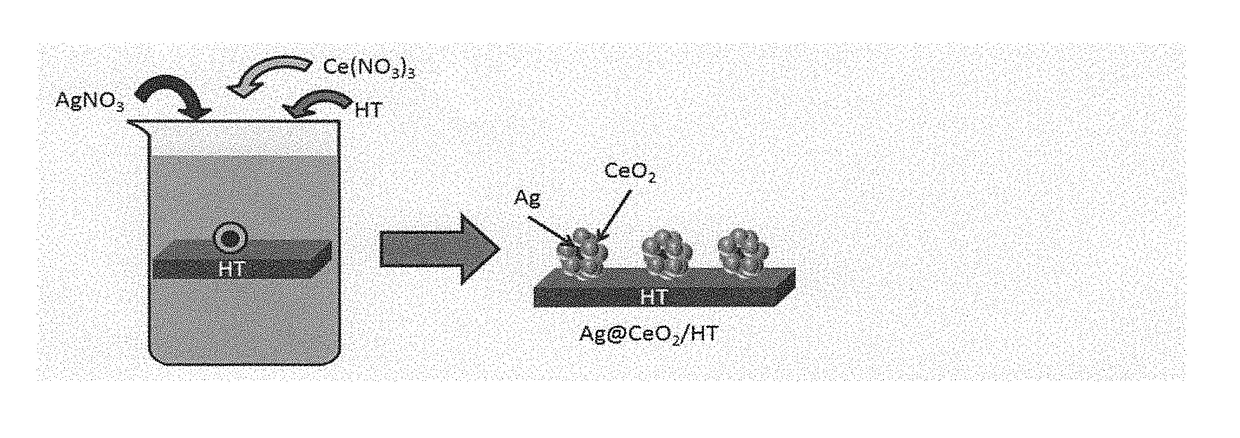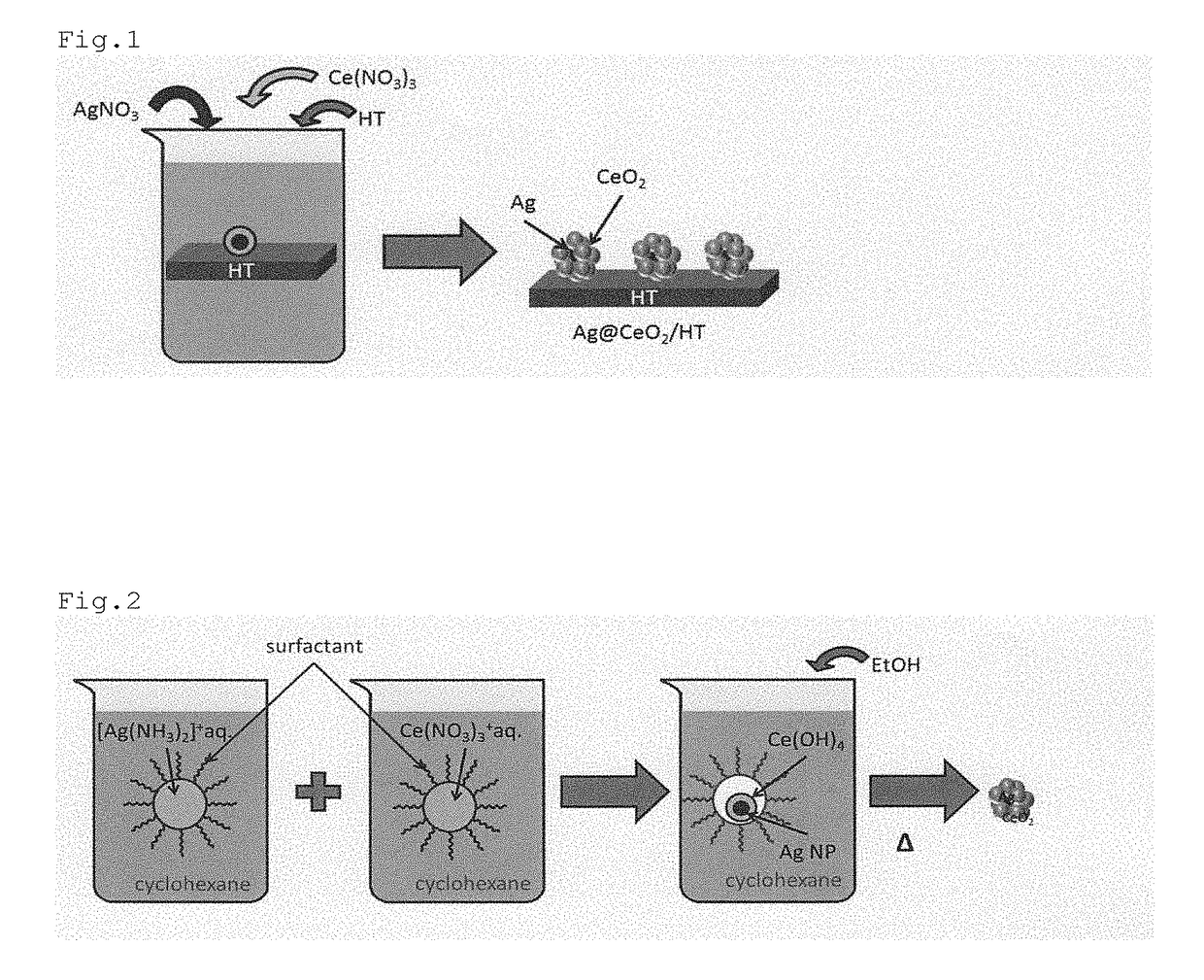Silver-cerium oxide composite catalyst supported on an alkaline carrier and method for producing the same
a composite catalyst and silver-cerium oxide technology, applied in the direction of physical/chemical process catalysts, metal/metal-oxide/metal-hydroxide catalysts, hydrocarbon preparation catalysts, etc., can solve the problems of high catalyst activity, high cost, air or humidity likely to affect reaction, etc., to achieve easy recovery, reuse with ease, and production with ease
- Summary
- Abstract
- Description
- Claims
- Application Information
AI Technical Summary
Benefits of technology
Problems solved by technology
Method used
Image
Examples
production example 1
Production of a Catalyst A
[0084]0.1 mmol of silver nitrate (AgNO3) and 0.1 mmol of cerium nitrate (Ce(NO3)3) were added to 50 mL of water, and then 2.0 g of hydrotalcite (HT) was added thereto and the resultant mixture was stirred at 90° C. for 2 hours.
[0085]The resultant mixture having a black precipitate formed was subjected to filtration, and the collected material was washed with pure water and then dried at room temperature to obtain a precipitate.
[0086]The thus obtained precipitate was examined by means of a TEM. As a result, it was found that a silver-cerium oxide composite was supported on hydrotalcite, wherein the silver-cerium oxide composite had a core-shell structure which has a silver nano-particle having a particle diameter of about 10 nm as a core and cerium oxide covering the core, and the result confirmed that the catalyst (AgNPs@CeO2—HT) of the invention was produced. A TEM image of the produced AgNPs@CeO2—HT is shown in FIG. 3. The scale in the TEM image indicates...
production example 2
Production of a Catalyst B
[0087]A precipitate was obtained in substantially the same manner as in Production Example 1 except that magnesia (MgO) was used in place of hydrotalcite. The color of the precipitate in the mixture after being stirred was found to have changed to black.
[0088]The thus obtained precipitate was examined by means of a TEM. As a result, it was found that a silver-cerium oxide composite was supported on magnesia, wherein the silver-cerium oxide composite had a core-shell structure which has a silver nano-particle having a particle diameter of about 5 nm as a core and cerium oxide covering the core, and the result confirmed that the catalyst (AgNPs@CeO2—MgO) of the invention was produced. A TEM image of the produced AgNPs@CeO2—MgO is shown in FIG. 4. The scale in the TEM image indicates 5 nm.
production example 3
Production of a Catalyst C
[0089]A precipitate was obtained in substantially the same manner as in Production Example 1 except that calcium carbonate (CaCO3) was used in place of hydrotalcite. The color of the precipitate in the mixture after being stirred was found to have changed to black.
PUM
| Property | Measurement | Unit |
|---|---|---|
| molar ratio | aaaaa | aaaaa |
| particle diameter | aaaaa | aaaaa |
| particle diameter | aaaaa | aaaaa |
Abstract
Description
Claims
Application Information
 Login to View More
Login to View More - R&D
- Intellectual Property
- Life Sciences
- Materials
- Tech Scout
- Unparalleled Data Quality
- Higher Quality Content
- 60% Fewer Hallucinations
Browse by: Latest US Patents, China's latest patents, Technical Efficacy Thesaurus, Application Domain, Technology Topic, Popular Technical Reports.
© 2025 PatSnap. All rights reserved.Legal|Privacy policy|Modern Slavery Act Transparency Statement|Sitemap|About US| Contact US: help@patsnap.com



